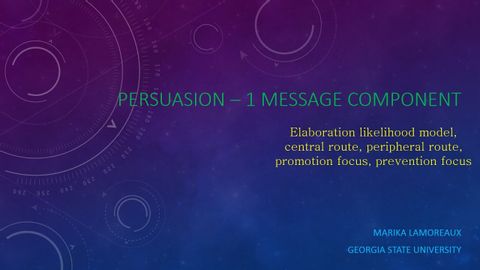
Subtitles & vocabulary
Persuasion 1: message component
00
Yogi posted on 2016/02/09Save
Video vocabulary
evidence
US /ˈɛvɪdəns/
・
UK /'evɪdəns/
- Uncountable Noun
- Factual proof that helps to establish the truth
- Information presented in court to prove or disprove alleged facts.
- Transitive Verb
- To indicate clearly; to be evidence of.
- To show clearly; prove.
A1TOEIC
More psychology
US /saɪˈkɑlədʒi/
・
UK /saɪ'kɒlədʒɪ/
- Uncountable Noun
- The study of the mind and how it affects behavior
- Way in which a person or group thinks and behaves
C2
More part
US /pɑ:rt/
・
UK /pɑ:t/
- Noun
- Division of a book
- Ratio of something, e.g. 3 of gin, 1 of tonic
- Transitive Verb
- To make a line in a person's hair, by using a comb
A1TOEIC
More overcome
US /ˌovɚˈkʌm/
・
UK /ˌəʊvə'kʌm/
- Transitive Verb
- To succeed in a struggle against; defeat
- Participle
- Past participle of overcome; to have successfully dealt with or controlled a problem or feeling.
A2TOEIC
More Use Energy
Unlock All Vocabulary
Unlock pronunciation, explanations, and filters
